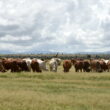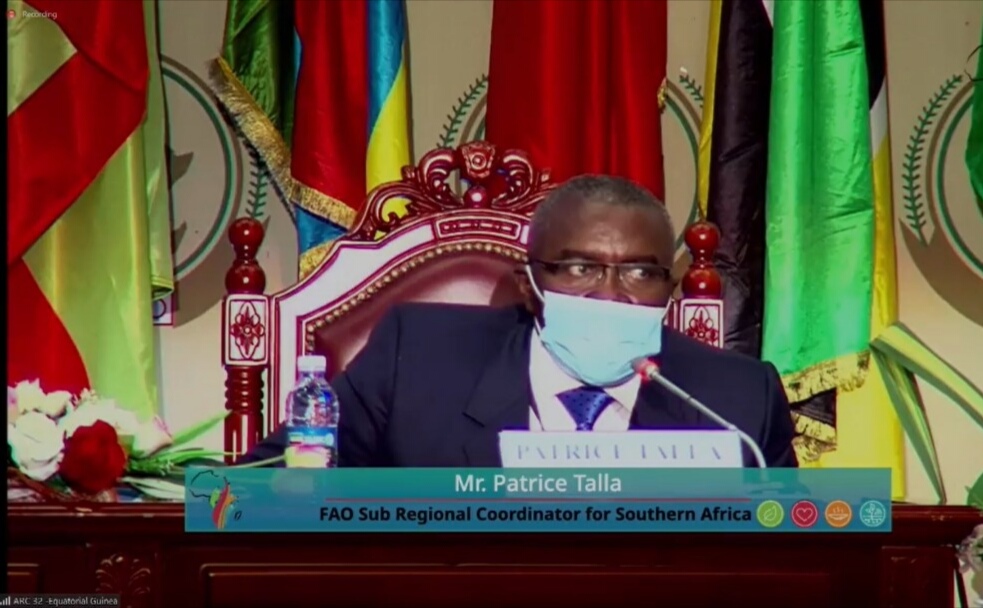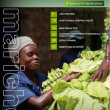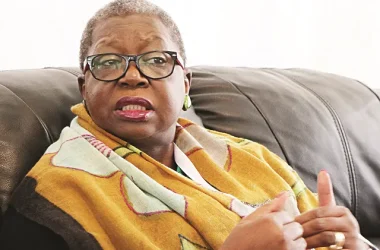
FAO Regional Conference for Africa begins in Malabo, Equatorial Guinea
African governments should forge new partnerships to overcome the ‘silent’ pandemic of poverty, hunger and undernourishment bedevilling the continent.
An interactive digital report launched last December showed that the number of hungry people in Africa continues to rise, spurred by conflict, climate change and economic slowdowns including those triggered by COVID-19.
The African Union Commission (AUC), the Food and Agriculture Organization of the United Nations (FAO), and the UN Economic Commission for Africa (UNECA) launched the digital report as the latest update to their annual reporting on the state of food security and nutrition in Africa.
The report showed that hunger on the continent has worsened substantially since 2013, with most of this deterioration occurring between 2019 and 2020.
In 2020, 281.6 million Africans were undernourished, an increase of 89.1 million over 2014, the report shows. There is significant variation in the levels and trends of hunger across the subregions. About 44 percent of undernourished people on the continent live in Eastern Africa, 27 percent in Western Africa, 20 percent in Central Africa, 6.2 percent in Northern Africa, and 2.4 percent in Southern Africa.
Addressing the 32nd Session of the FAO Regional Conference for Africa (ARC32) currently underway in Malabo, Equatorial Guinea, FAO Assistant Director-General and Regional Representative for Africa Abebe Haile-Gabriel, said governments should draw lessons from the COVID-19 pandemic to trigger urgent action at national level.
“Collectively, we have learned to do things differently, to go digital like never before, and to quickly forge new partnerships to overcome threats. That same agility and spirit of collaboration is needed now for the silent pandemic of poverty, hunger and undernourishment and extreme vulnerabilities to shocks in Africa,” he said.
More than 50 government ministers from African member countries are taking part in the hybrid conference, as well as representatives from observer countries, the African Union, donor organizations, civil society and the private sector. Hundreds of delegates will join the Zoom sessions over the next four days, and many more will watch the live webcast.
The Regional Conference is FAO’s highest governing body in Africa. Over the next four days, delegates from across Africa will deliberate and provide guidance on regional priorities in agrifood systems transformation in Africa.
Underpinning the discussions is the FAO Strategic Framework 2022-2031, which supports the 2030 Agenda through the transformation to more efficient, inclusive, resilient and sustainable agrifood systems for better production, better nutrition, a better environment, and a better life, leaving no one behind.
“We have to work together to exchange experiences to face these difficulties together,” said H.E. Francisca Eneme Efua, Minister of Agriculture, Livestock, Forests and Environment of the Republic of Equatorial Guinea and Chairperson of ARC32.
“This conference gives us an outstanding opportunity to deal with the issues facing Africa. I ask all delegations to ‘put everything on the table’ so we can come up with ministerial consensus,” she said.
Deepening hunger crisis
A devastating drought in the Horn of Africa has brought many rural families to their knees, and triggered warnings of potential famine in Somalia.
Acute food insecurity in the Sahel and West Africa almost quadrupled between 2019 and 2022 –jumping from 10.8 million people in 2019 to 40.7 million people in 2022, with millions more at-risk of slipping into crisis levels of hunger.
Sky-rocketing global food prices and strains on food supply because of the Russia/Ukraine crisis are likely to push more people into hunger in Africa.
Russia and Ukraine together account for nearly 30 percent of global wheat exports and about 80 percent of global sunflower exports. Russia is the largest exporter of fertilizers and this means that supply disruptions in these two countries will be felt across global agrifood systems.
In an address to the 169th session of FAO’s Council, convened to discuss the consequences of the war in Ukraine on global food security, FAO Director-General QU Dongyu, emphasized the importance of keeping global supply chains functioning.
The meeting was held as food prices posted a 12.6 percent rise from February, reaching a new all-time high in March, with cereals and vegetable oils prices surging, according to FAO’s latest Food Price Index.
“Prices for staple foodstuffs such as wheat and vegetable oils have been soaring lately, imposing extraordinary costs on global consumers, particularly the poorest,” Qu said. And with energy prices rising in parallel with food prices, “the purchasing power of vulnerable consumers and countries has further decreased,” Qu said.
Today’s high fertilizer prices, meanwhile, could lead to lower fertilizer use next season and possibly beyond, with the real prospect of a drop in food productivity leading to even higher food prices.
“This would potentially result in even more undernourished people in 2022 and months to come,” Qu warned.
“Without extraordinary efforts by every African country, it will be difficult to meet the aspirations and targets of the Sustainable Development Goals,” Qu also wrote in an opinion piece published in the lead up to the Regional Conference for Africa. .
Highlights in the coming days include a special experience-sharing session among countries on solutions for better production, better nutrition, a better environment and a better life, and a launch with the African Union of new investment guidelines on youth in agrifood systems.
The Conference ends on Thursday 14 April.











